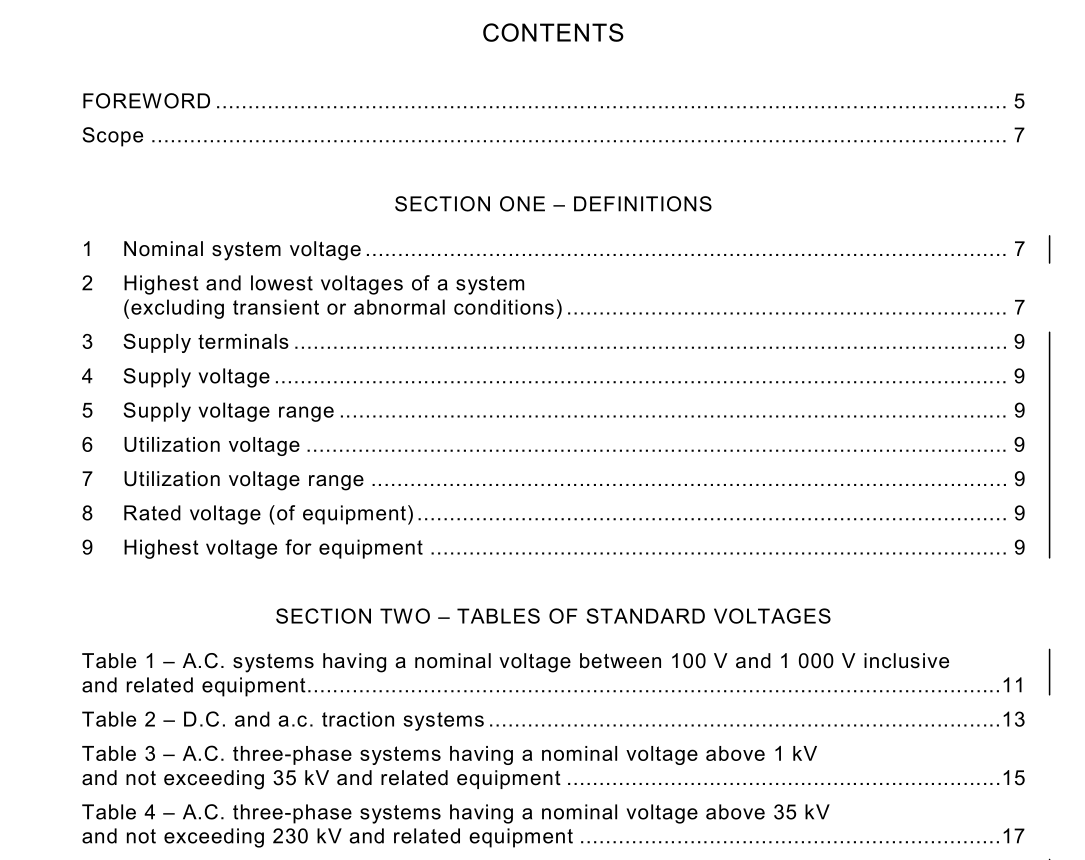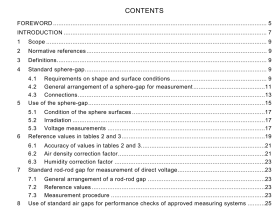IEC 60038 pdf download

IEC 60038 pdf download.IEC standard voltages
1 Nominal system voltage
Voltage by which a system is designated.
2 Highest and lowest voltages of a system
(excluding transient or abnormal conditions) 2.1 Highest voltage of a system The highest value of voltage which occurs under normal operating conditions at any time and at any point on the system. It excludes voltage transients, such as those due to system switching, and temporary voltage variations. 2.2 Lowest voltage of a system The lowest value of voltage which occurs under normal operating conditions at any time and at any point on the system. It excludes voltage transients, such as those due to system switching, and temporary voltage variations.
3 Supply terminals
The point where the distribution system of the electricity supply authority and the electrical
system of the consumer are connected.
4 Supply voltage
The phase-to-phase or phase-to-neutral voltage at the supply terminals.
5 Supply voltage range
The voltage range at the supply terminals.
6 Utilization voltage
The phase-to-phase or phase-to-neutral voltage at the outlets or at the terminals of equipment.
7 Utilization voltage range
The voltage range at the outlets or at the terminals of equipment.
8 Rated voltage (of equipment)
The voltage assigned generally by a manufacturer, for a specified operating condition of a component, device or equipment.
9 Highest voltage for equipment
Highest voltage for which the equipment is specified regarding: a) the insulation; b) other characteristics which may be referred to this highest voltage in the relevant equipment recommendations. The highest voltage for equipment is the maximum value of the “highest system voltage” (see 2.1) for which the equipment may be used. NOTE 1 The highest voltage for equipment is indicated for nominal system voltages higher than 1 000 V only. It is understood that, particularly for certain nominal system voltages, normal operation of equipment cannot be ensured up to this highest voltage for equipment, having regard to voltage-sensitive characteristics such as losses of capacitors, magnetizing current of transformers, etc. In such cases, the relevant recommendations must specify the limit to which the normal operation of this equipment can be ensured. NOTE 2 It is understood that the equipment to be used in systems having nominal voltage not exceeding 1 000 V should be specified with reference to the nominal system voltage only, both for operation and for insulation. NOTE 3 Attention is drawn to the fact that in some equipment standards (for example, IEC 60335-1 and IEC 60071) the term “voltage range” has a different meaning.
In the following table, the three-phase four-wire systems and single-phase three-wire systems include single-phase circuits (extensions, services, etc.) connected to these systems. The lower values in the first and second columns are voltages to neutral and the higher values are voltages between phases. When one value only is indicated, it refers to three-wire systems and specifies the voltage between phases. The lower value in the third column is the voltage to neutral and the higher value is the voltage between lines. The voltage in excess of 230/400 V are intended exclusively for heavy industrial applications and large commercial premises.Concerning supply voltage range, under normal service conditions, it is recommended that the voltage at the supply terminals should not differ from the nominal voltage of the system by more than ±10 %. For the utilization voltage range, in addition to the voltage variations at the supply terminals, voltage drops may occur within the consumer’s installations. For low-voltage installations, this voltage drop is limited to 4 %, therefore, the utilization voltage range is +10 %, –14 % 1) . This utilization range should be taken into account by Product Committees.









